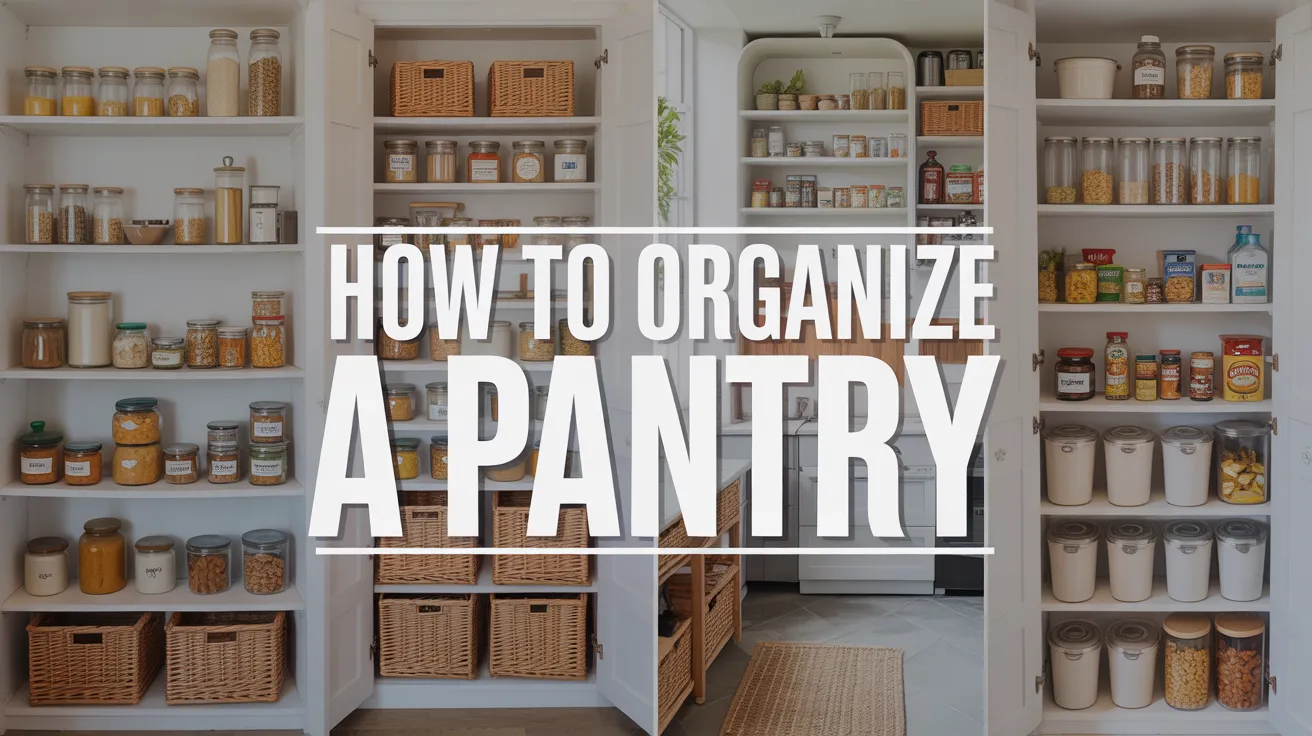How to Organize a Pantry: Essential Steps for an Organized Kitchen
Organize a pantry can make kitchen life smoother and reduce food waste. It involves sorting items into categories, removing expired goods, and using clear containers to keep everything visible. A well-organized pantry saves time and money by making it easy to find ingredients and preventing unnecessary purchases.
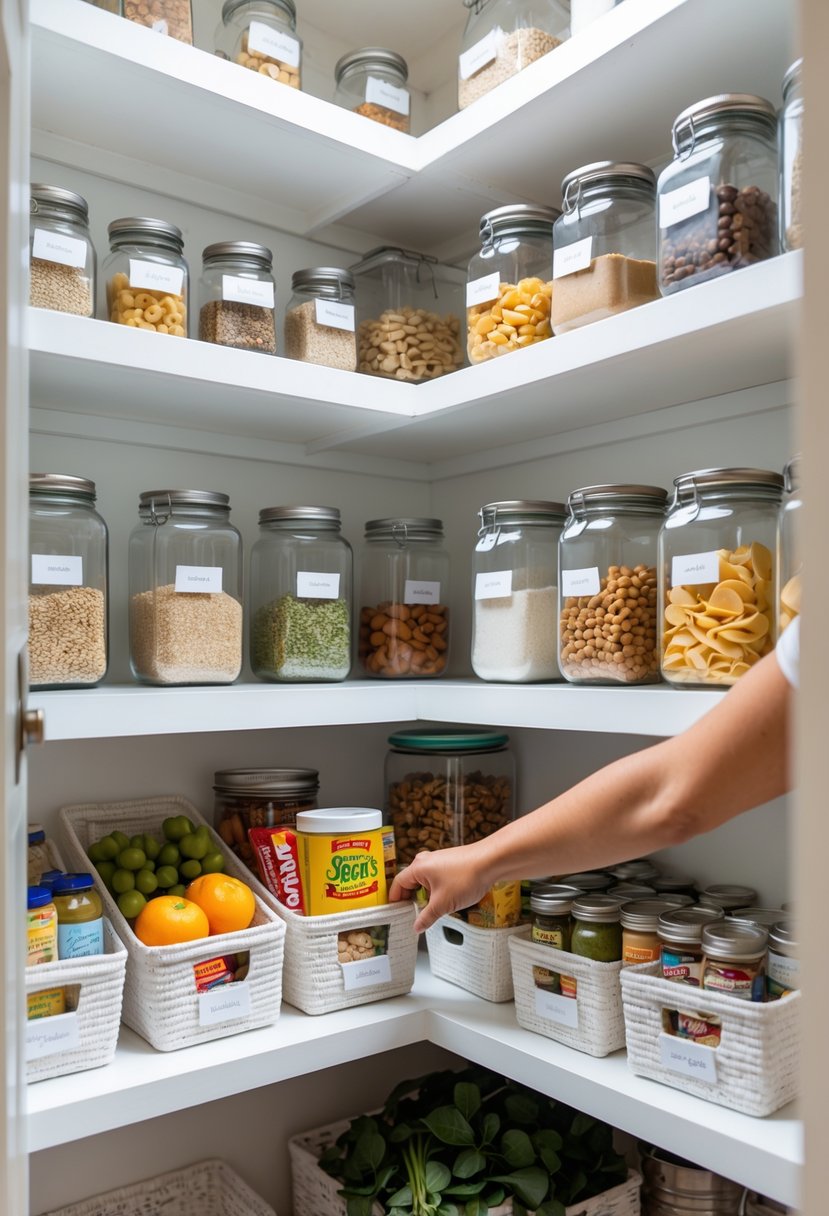
Using tools like lazy Susans, bins, and labels helps keep things tidy and accessible. Leaving some empty space ensures the pantry doesn’t get overcrowded, making it easier to add new items. By arranging foods based on how often they are used, the pantry stays efficient and user-friendly.
Keeping an organized pantry also means setting up a system that works for daily habits. When everything has a designated place, stocking groceries and meal prep become quicker tasks. This approach helps maintain order long term without adding stress.
Fundamentals of Pantry Organization
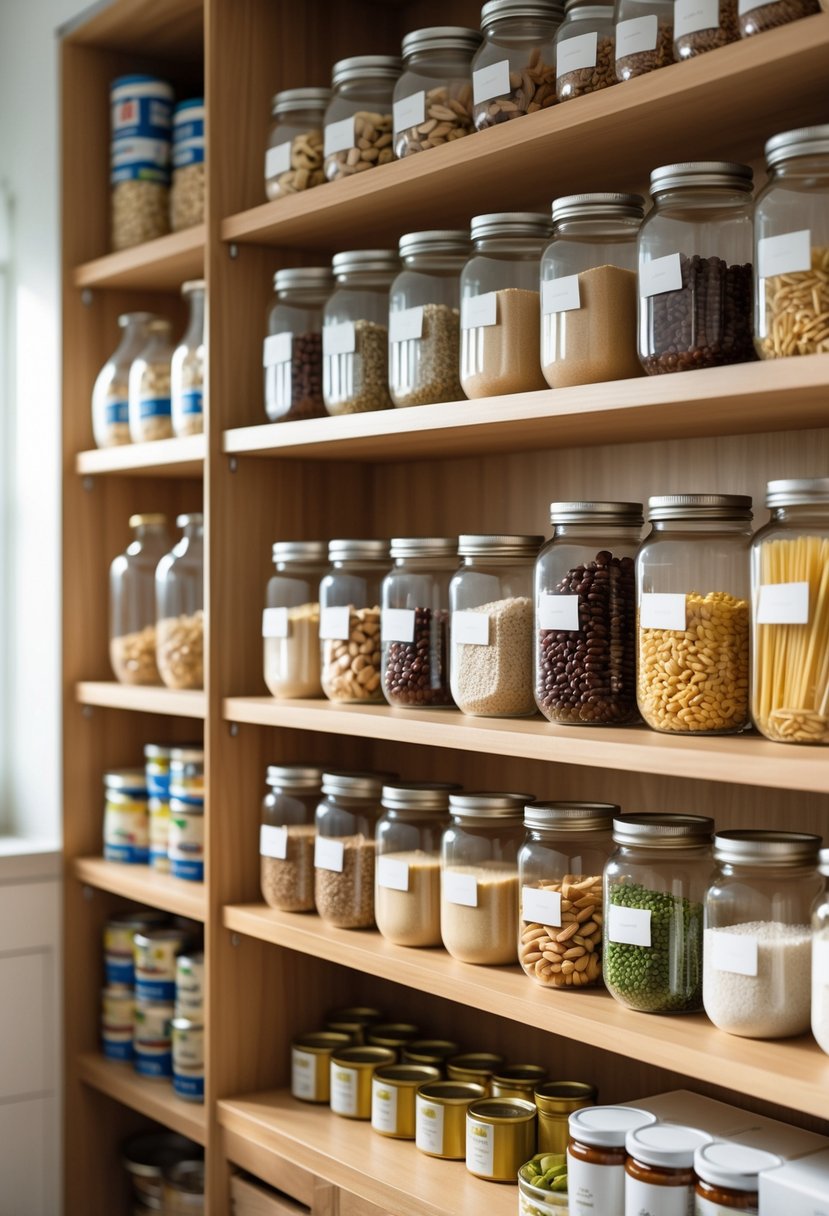
A well-organized pantry starts with removing clutter and making smart choices about how items are stored. Keeping track of expiration dates, grouping foods by category, and selecting the right containers are key steps. These actions help maintain order, improve access, and extend the shelf life of products.
Purge Expired Products
Removing expired products is the foundation of pantry organization. Expired spices, canned goods, and other items can lose their quality and pose health risks. It is best to throw them away promptly.
Expired items should be discarded regardless of whether they appear usable. This reduces clutter and frees up space for fresh products. Checking expiration dates regularly can prevent buildup.
Recycling containers after emptying expired foods is a good habit. This not only keeps the pantry clean but also supports sustainability. Cleaning the pantry after purging ensures a fresh start.
Categorize Items for Efficient Access
Grouping similar foods together makes it easier to find what is needed quickly. Categories like baking supplies, snacks, canned goods, and breakfast items should each have a dedicated space.
Within these groups, arranging items by how often they are used improves efficiency. Frequently used goods should be at eye level or in easy-to-reach spots.
Organizing by mealtime, such as breakfast versus dinner ingredients, can also save time. Labeling bins and shelves can reinforce this system and help everyone in the home follow it.
Choose Food Storage Containers
Selecting proper food storage containers keeps products fresh and visible. Glass containers are preferred for their durability and ability to maintain freshness without odors.
Plastic containers are lightweight and often more budget-friendly but should be BPA-free. Clear containers allow quick visual checks of contents and inventory levels.
Avoid keeping foods in their original packaging once opened, especially cereals and nuts. Using airtight containers or reusable bags helps prevent spoilage and pests.
Choosing stackable containers maximizes vertical space and reduces clutter. It is important to match container shapes and lids to avoid wasted space and simplify storage.
Smart Storage Solutions for an Organized Pantry
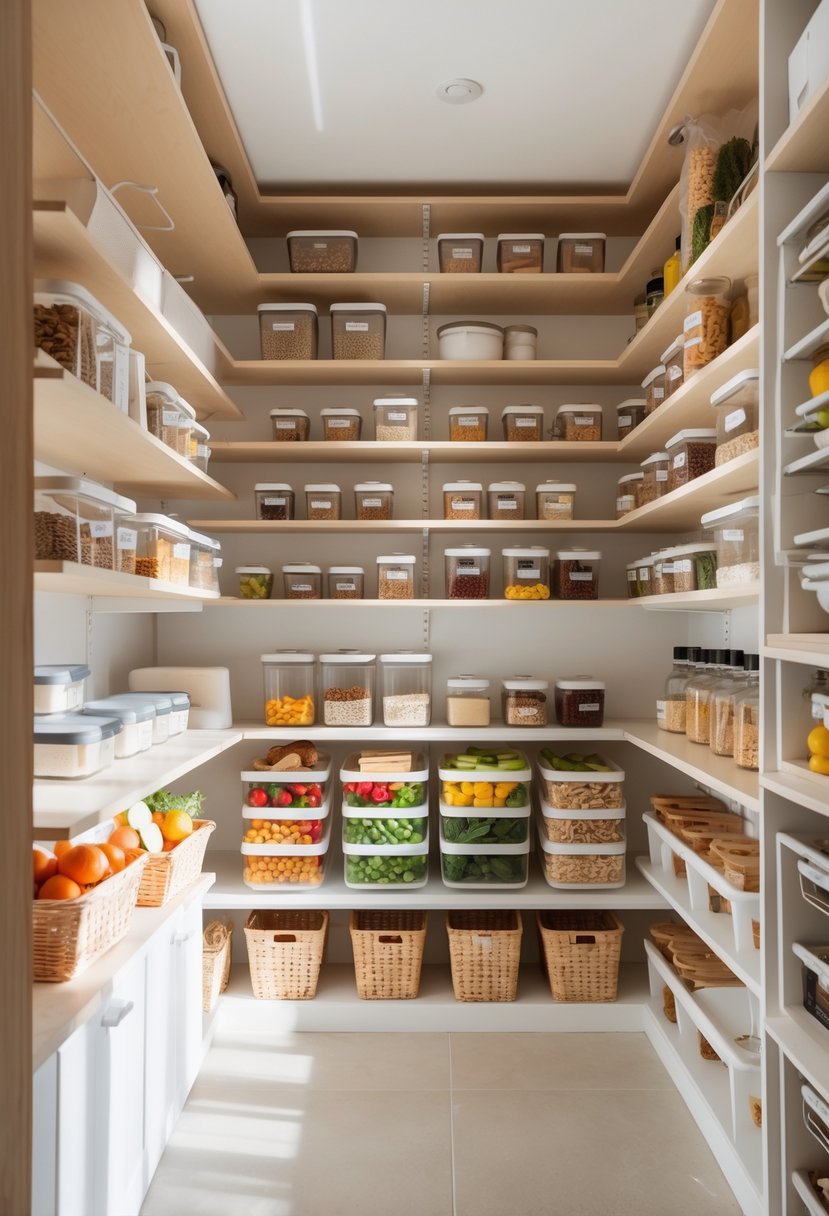
An organized pantry relies on using the available space efficiently and setting up systems that make items easy to find and access. Small tools like bins and turntables, combined with thoughtful shelf use and clear labeling, help keep everything in its place and speed up meal prep.
Maximize Pantry Shelves
Maximizing pantry shelves means using every inch without causing clutter or difficulty reaching items. Adjustable shelving helps accommodate different-sized goods, from tall cereal boxes to short spice jars. Shelves that reach the ceiling can store rarely used appliances or bulk items up top.
Using clear storage containers on shelves keeps items visible and fresh. Stackable plastic bins and wire racks can increase vertical space, allowing more items to fit without crowding. For high shelves, a sturdy step stool is essential to safely reach items.
Utilize Bins and Turntables
Bins group similar items and prevent small packages from scattering. Clear plastic bins make it easy to identify contents while keeping them contained. Limit how full bins become to avoid clutter.
Lazy Susan turntables are excellent for corner shelves or deep spaces. They spin easily, giving access to sauces, oils, or spices without digging through piles. Wire racks inside bins or on shelves can separate items by height or type, which improves visibility and access.
Create Zones for Easy Meal Prep
Creating zones in a pantry speeds up meal prep by grouping related items together. For example, designate a breakfast zone for cereals, oatmeal, and coffee pods. Set aside sections for baking supplies, snacks, canned goods, and condiments.
Having a beverage station with coffee or tea items close at hand helps streamline morning routines. Kids’ snacks can be placed at eye level to encourage independence. Clear zones reduce the time spent searching and keep ingredients organized.
Label and Maintain Your Pantry
Labeling bins, shelves, and containers clarifies where things belong. Use simple, easy-to-read labels so anyone can quickly find or return items. This helps prevent clutter buildup and confusion.
Maintaining an organized pantry requires regular inventory checks. Keep a note or chart of what needs to be replenished to avoid overbuying or running out. Periodic cleanup removes expired items and reevaluates storage effectiveness, making sure the pantry stays functional and tidy.
Conclusion
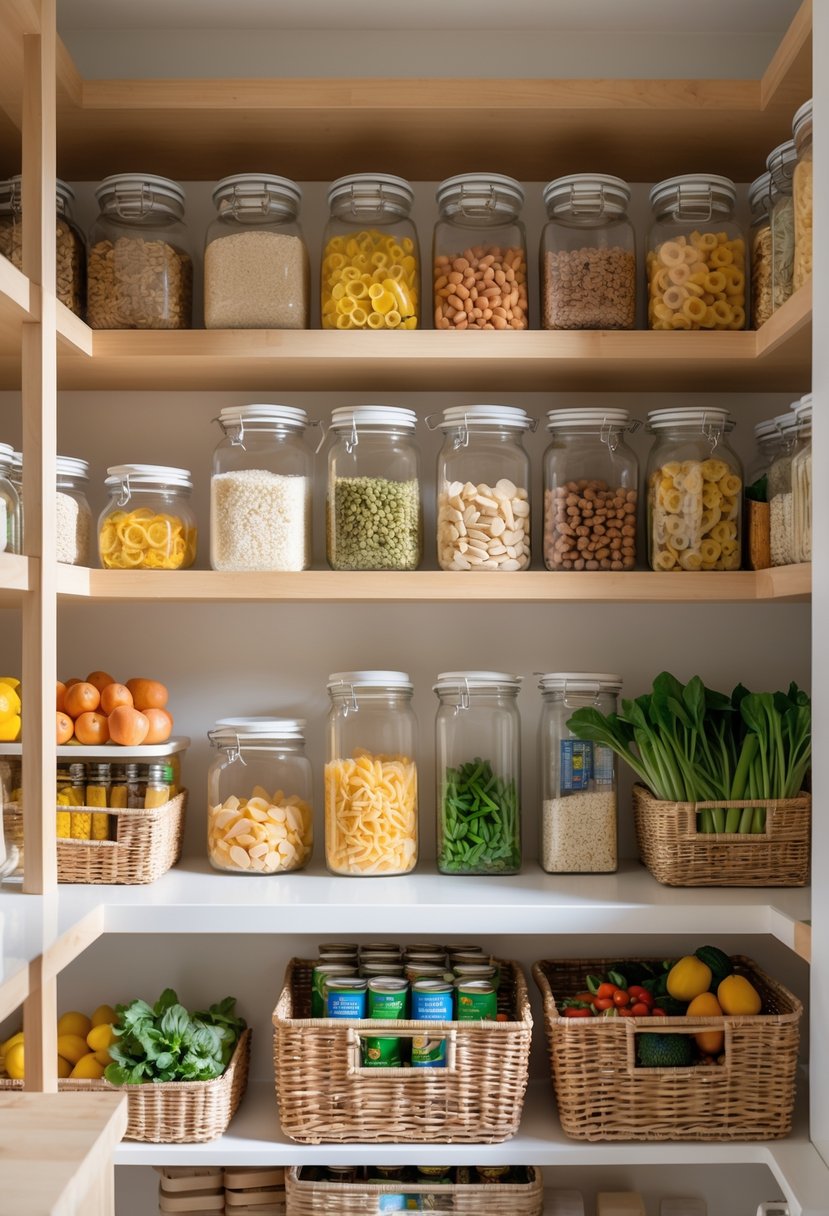
Organizing a pantry is a practical way to improve kitchen efficiency. It helps users find items quickly and reduces food waste by keeping track of what is available.
Using clear containers and labeling them creates a consistent look and makes it easy to identify food. Grouping items into zones such as snacks, canned goods, and baking supplies keeps the space tidy.
Regular maintenance is important. Scheduling a check every few months ensures expired items are removed and the system still fits the household’s needs.
Keeping only food in the pantry prevents clutter and helps maintain order. Non-food items should be stored elsewhere when possible.
Even small pantries or kitchen cabinets can be well organized by using baskets and labels. The key is to keep similar items together and make use of available space effectively.
A well-organized pantry supports better meal planning, reduces stress, and maintains food quality. The process may take some effort upfront but can be completed in a day and maintained easily over time.

